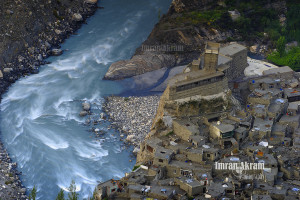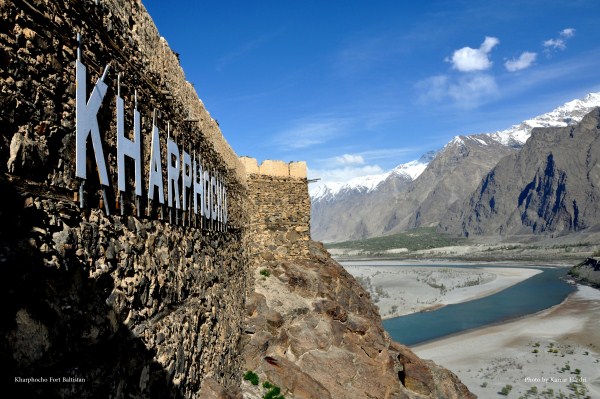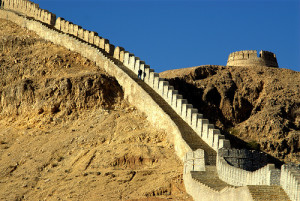Top Forts and Castles to Visit in Pakistan
Pakistan, with its diverse cultures, people and landscape is a country with great natural and cultural resources. Pakistan has a rich history and there are a number of ancient structures throughout the land that are a testament to this. These lands have been ruled by Alexander the Great, Maurya, Kushans, Arabs, Afghans, Mughals, British and even the White Huns. Pakistan’s Forts and Castles are spread wide across the country, starting from the Princely Province of Azad Kashmir and to all the way in the Province of Sindh. It’s no wonder that Pakistan has remnants of some wonderful historic forts and castles still standing proud. Here are such ancient architectural wonders for you to enjoy:
Derawar Fort

Derawar Fort is a square shaped fortress in the city of Bahawalpur, Province of Punjab. The fort was constructed by Bhati of Jaisalmer who was a Hindu Rajput. It is one of the largest square fortresses in Pakistan and is still in very good condition. It has 40 bastions, which are visible for many miles in the Cholistan Desert. The walls stand up to thirty meters high, have a circumference of 1500 meters. The tombs of the Nawabs of Bahawalpur and their families are also located in this fort.
Altit Fort

Altit Fort – Pakistan
This Fort is located in Hunza Valley in the province of Gilgit Baltistan in Pakistan. Altit Fort was originally home to the hereditary rulers of the Hunza state who carried the title Mir. The estimated age of the fort is known to be around 900 years, which makes it the oldest monument in Gilgit Baltistan. The Altit Fort was in great disrepair, but has been restored by the Aga Khan Trust, with the help of the Government of Norway and Japan. It has been open to the public since 2007.
Ramkot Fort

Ramkot Fort
It is an ancient Fort situated in Azad Kashmir besides the Mangla Dam. It is accessible through water transport from Dina and by road from Mirpur. The Ramkot Fort is built on the summit of a hill, which was the site of an old Hindu Shiva Temple before the construction of the fort. The fort is built on the hilltop of River Jhelum, with three of its side surrounded by the river. The chronology of the fort’s construction still remains a question.
Baghsar Fort

Baghsar is located in the Samahni Valley near Pakistan-India border in Azad Kashmir. Baghsar means the land of water and gardens. This beautiful place is famous for its lake and the huge granite built Baghsar fort of course. It is also famous for containing the intestines of Emperor Jahangir which are known to be buried here.
Skardu Fort

Skardu Fort, known as Kharphocho Fort, is situated in Skardu Valley in Gilgit-Baltistan. It is known as the King of Forts because it is an excellent example of ancient engineering. The fort is built above the junction of rivers and has an ancient mosque that is present inside the castle.
Ranikot Fort

Ranikot Fort, which is also known as the great wall of Sindh, is a historical fort in the Jamshoro district in the Province of Sindh. This fort is believed to be the world largest fort, with a circumference of approximately 26 kilometers (16 miles).
Rohtas Fort
The Rohtas Fort, built in the 16th century, is located near Jhelum city in the Province of Punjab. Within the huge terraced rampart walls with robust bastions and 12 gates, it took 8 years and a force of 30,000 men to complete. The construction of the fort is irregular in shape, with its circumference being 5.2 km.

It was never taken by storm and has survived intact to the present day. The main fortifications consist of the massive walls which extend for more than 4 km, and are lined with bastions and pierced by monumental gateways. It is an exceptional example of early Muslim military architecture in Central and South Asia which is why it is listed as UNESCO’s World Heritage Site.
Multan Fort

The Multan Fort is located near the City of Multan, in the Province of Punjab. The Multan fort is famous for the Sufi Saint, Shah Rukn-e-Alam, who is buried within the boundaries of the fort. Apart from the shrine, most of the fort was ruined by the British in 1848-49 while retaliating against the Sikh governor of Multan. The Multan fort was originally a military installation and a landmark of Indian defense and architecture.
Noor Mahal

The Noor Mahal is in Bahawalpur, Province of Punjab. It belonged to the Nawab of Bahawalpur State during the British Raj. The Nawab built this palace for his wife in 1872 like an Italian Chateau. However, his wife only stayed there for one night and refused to spend another night there because of the view to the graveyard from her balcony. It is now open to public and is currently the property of Pakistan Army.
Royal Fort of Lahore
The Lahore Fort is located in the Northwestern corner in Lahore, Province of Punjab. The origins of the fort are obscure, however the existing structure is said to have been built by the Mughal emperor Akbar. Spreading over 20 hectares, the fort has two gates; Alamgiri Gate built by Emperor Aurangzeb and Maseeti or Masjidi Gate built by Emperor Akbar. The Fort complex includes such architectural marvels as Badshahi Mosque, Sheesh Mahal, Alamgiri Gate, Naulakha pavilion and Moti Masjid. It demonstrates the rich traditions of Mughal architecture.

The City of Lahore is also home to Shalimar Gardens, located 7km from the Lahore Fort, which are also built by the Mughals. The elegance of these splendid gardens is visible by how it is built on three terraces with lodges, waterfalls and large ornamental ponds. These two distinct royal complexes are together listed as UNESCO’s World Heritage Site. One characterized by monumental structures and the other by extensive water gardens, are outstanding examples of Mughal artistic expression at its height.
